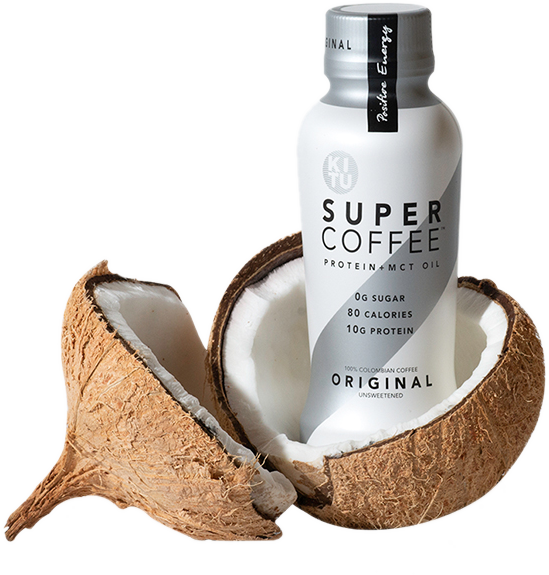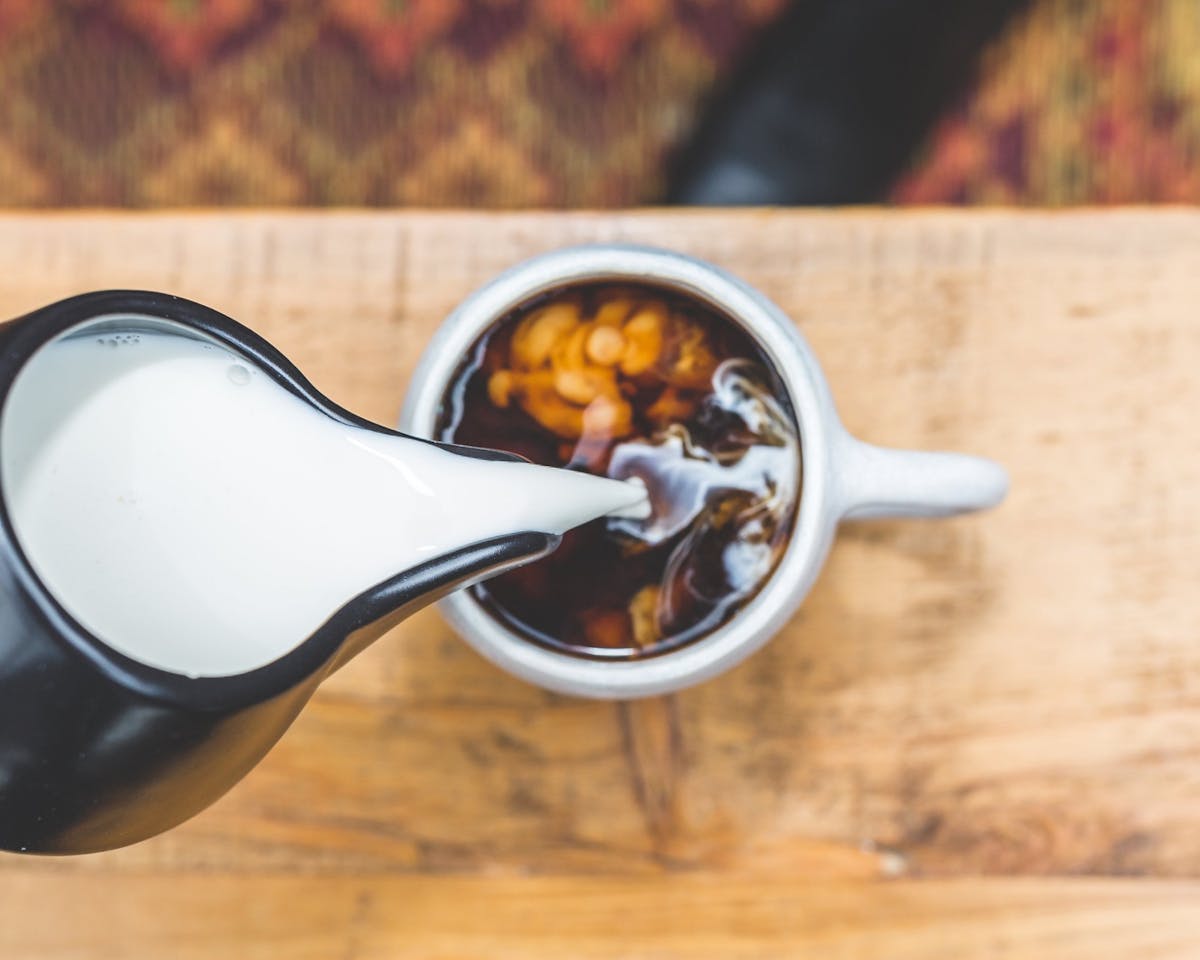Your cart is empty
- You need to lose weight. (Or perhaps you just want to lose weight.)
- You spend days, or weeks – or the way some of us work, years – looking at the pros and cons of various diets.
- You finally decide that a low-carb diet like keto makes the most sense, because it offers the possibility of rapid and impressive weight loss.
- You start searching websites to figure out what you can and can’t eat on keto.
And one somewhat-bizarre drink keeps popping up: bulletproof coffee.
You read a little more, and find that “bulletproof coffee” (actually a trademarked name for the generic beverage also called “keto coffee” or “butter coffee”) only has three ingredients. Black coffee, butter, and something called MCT oil. It’s easy to make – but what’s up with those ingredients?
Black coffee? Of course. Butter? Why would anyone put a chunk of butter into anything if they’re trying to lose weight? MCT oil? What the heck is MCT oil, and why would I want to put oil into my morning coffee?
Bulletproof coffee sounds odd, to put it mildly. There are scientific reasons, though, why this seemingly-mismatched set of ingredients can be extremely helpful to those on keto or other low-carb eating plans like paleo or intermittent fasting.
And if the idea of drinking coffee with butter and oil doesn’t exactly tickle your taste buds, there are other bulletproof coffee recipes that create a coffee drink you’ll probably find more palatable.
Let’s get started.
The Basics of the Keto Diet
You can’t fully understand the reasons to start your day with a cup of bulletproof coffee, until you understand how the keto diet works and how keto coffee fits into the picture.
We’ll begin with the details most people focus on: what you can and can’t eat on keto.
The Keto Diet’s History and Guidelines
You might be surprised to learn that the ketogenic diet has been around for a very long time. About 100 years ago, doctors started using very-low-carb diets like keto to treat certain types of childhood epilepsy. (The “Classic Ketogenic Diet” was developed at the Mayo Clinic in 1923.) Dramatically reducing dietary carbs greatly reduced the frequency of patients’ seizures, and the diet remained the medical establishment’s treatment of choice until more-effective anti-epilepsy drugs were developed.
Low-carb diets have actually been suggested as a weight loss tool since the 19th century. Their mass popularity, however, originated with the Atkins diet in 1972, and other variations like the South Beach diet and the paleo diet followed. The version that’s become the 21st century’s most popular low-carb eating plan, of course, is the keto diet.
The basics of all low-carb diets are generally the same. You drastically reduce the amount of carbohydrates you consume each day, replacing them with more protein and a lot more healthy fat. In return, you see weight loss. There are no medically-accepted estimates of how much you can lose on keto, but anecdotal evidence suggests an initial loss of about ten pounds in water weight, followed by fat loss averaging 1-2 pounds per week.
When you’re on keto you can’t eat most of the foods that Americans love. Grains and starches are carb-heavy, so all forms of bread, pasta, rice, cereal, corn and bakery goods are out, as are potatoes, root vegetables and most beers. Sugar is essentially pure carbohydrate, so all forms of sugar (including natural sweeteners like honey and maple syrup) are forbidden, as is soda, fruit juice and anything else made with added sugar. That includes most packaged and processed foods.
Even milk and most fruits are excluded since they contain lots of the milk sugar known as lactose, or the fruit sugar known as fructose.
It’s impossible to understate how drastic the carb restrictions are. The average American diet contains about 225-235 grams of carbohydrates per day. On a strict keto diet, you’re allowed to eat 20-25 grams.
But why?
It’s because of the fascinating mechanism by which keto can lead to weight loss.
How the Keto Diet Works
We’ll take this step-by-step.
- On a normal, non-diet day, you eat lots of carbohydrates. When they’re digested, the liver turns them into glucose – the blood sugar that the body and brain use as fuel for energy.
- A keto diet cuts off that supply of carbs and creates a fuel shortage. Fortunately, the body has a backup plan.
- It enters a metabolic state called ketosis, and remains there until it gets enough carbohydrates to resume glucose production.
- During ketosis the liver produces an alternate fuel source: molecules known as ketones. Even though the body and brain only run on ketones during an “emergency,” they’re a more-than-adequate energy source. In fact, the brain prefers ketones for the some of the functions it performs.
- There’s a final, important piece to this puzzle. In order to produce ketones, the body burns stored body fat – exactly the stuff you want to burn if your goal is to lose weight.
So, in a somewhat-convoluted way, starving the body of carbs starts a process that ends with fat burning and weight loss.
You can’t just flip a switch to tell the body to enter ketosis, though. It takes at least several days of keto dieting just to reach that point; for some people, it can take a week or even longer. And as soon as you consume enough carbohydrates to allow glucose production – ballgame over. The body is kicked out of ketosis, fat-burning stops, and it can be another week before you can get back into weight loss mode again.
That’s why keto dieters have to be vigilant about the carbs they’re eating, and why there are no such things as “cheat days” on keto. One wrong step and the diet is over. Even drinking a single Coke or eating a Big Mac can be enough to ruin things.
Don’t worry, we haven’t forgotten about bulletproof coffee. That part of the story comes next.
The Keto Diet and Bulletproof Coffee
We have no doubt some people grow to love the taste of bulletproof coffee. That’s not the reason most keto dieters drink it, though. They drink it because the MCT oil and grass-fed unsalted butter (or ghee, a form of clarified butter) that are mixed into keto coffee support their weight loss efforts.
Once again, some explanations are in order.
MCT Oil
You won’t find MCT oil next to the olive oil and safflower oil in your local grocery store. MCT oil is what you might call a specialty product.
MCT stands for medium-chain triglycerides. “Triglycerides” is another word for fats, and “medium-chain” describes their molecular structure.
Almost all of the fats we normally eat are, by contrast, long-chain triglycerides. MCTs are only found in coconuts, some dairy products, and the kernels of the palm tree – and even in those foods, they exist in small amounts. The only way MCTs can have an effect on the body is through consumption of pure MCT oil, which is extracted from coconut oil or palm kernel oil.
“Why would I want to consume MCT oil?” we hear you ask. Well, if you’re on a keto diet, there are two very good reasons.
Long-chain triglycerides are digested, along with everything else we eat, in the gastrointestinal system. MCTs, however, are treated differently because they’re so much shorter. They don’t have to be digested at all; they are sent right to the liver – where they’re broken down to create ketones.
Getting it now? Since keto dieters have to stay in ketosis in order to burn fat, produce ketones and lose weight, extra ketones created from MCT oil are a very big deal. And since MCTs are available for use immediately, that provides an extra boost of energy as well.
MCT oil provides all sorts of other related benefits, too, even if you’re not on keto. MCTs make you feel fuller, and that feeling of satiety helps with weight loss. They apparently increase heat generation in the body, which leads to fat burning. And excess MCTs aren’t stored as fat, certainly a plus when you’re trying to get rid of extra body fat.
We’re not done yet. Research has linked MCTs to a number of health benefits unrelated to weight loss including improved cognitive function, better cholesterol levels and heart health, blood sugar control, and endurance during workouts. MCT oil also contains high levels of antioxidants, and has been shown to have antibacterial, antifungal and anti-inflammatory benefits as well.
We assume that, by this point, you’re sold on MCT oil. Let’s talk about butter.
Grass-Fed Butter
To answer the obvious question first, no, you don’t have to use grass-fed butter in keto coffee. Bulletproof coffee recipes usually specify “grass-fed” simply because it contains higher levels of vitamins, fatty acids and other nutrients. If you’re going to use regular butter, that’s fine; try to get unsalted butter, though.
Why put butter into coffee at all? Because of the fat.
Keto isn’t just a low-carb diet; it’s also a high-fat diet. High-quality healthy fats are emphasized in keto eating plans, because they’re the macronutrient that replaces most of the carbohydrates you’re eliminating. Keto dieters are encouraged to add healthy fat to most of their meals – and putting a tablespoon or two of butter into a cup of coffee is an easy way to do it.
We hear another question from the audience: “But isn’t too much butter bad for you?”
Excellent question, and yes, it can be. We’ll address that concern – and what you can do about it – after we make a cup of keto bulletproof coffee.
How to Make Bulletproof Coffee
Keto coffee isn’t difficult to prepare. In fact, the original bulletproof coffee recipe created by entrepreneur and marketer Dave Asprey is the same one you’ll see on virtually every website and in virtually every keto diet book.
(Asprey is the man who trademarked “bulletproof,” and now uses that fame to sell everything from high-grade coffee beans and branded MCT oil (which he calls “Brain Octane Oil”), to supplements and collagen powder.)
Here’s the basic keto coffee recipe.
- Combine a cup of hot coffee, 1-2 tablespoons of unsalted grass-fed butter or ghee, and 1-2 teaspoons of MCT oil.
- Blend for 30 seconds (you can use a milk frother if you don’t have a blender), until the mixture has the creaminess of a good latte.
That’s it. No prep time required, and 1-2 minutes total time from start to finish. Easy peasy.
Naturally, Asprey preaches the benefits of his mold- and mycotoxin-free coffee beans, and his “Brain Octane” MCT oil. High-quality products are always great, but you don’t need his branded (and expensive) products to make bulletproof coffee.
Any good coffee beans or ground coffee will work just fine (as will decaf), and you can buy quality MCT oil at Whole Foods or on Amazon. One shopping tip: there are four different types of medium-chain triglycerides, defined by the length of their chains. They are caproic, caprylic, capric and lauric acids; you’ll get the best keto performance from MCT oil containing caprylic acid and/or capric acids.
How to Vary Bulletproof Coffee Recipes
Keto butter coffee can be an acquired taste, and some people simply can’t drink coffee without milk and sugar.
You can’t have either milk or sugar on keto, of course, but there are many substitutes you can add to tailor keto coffee to your tastes.
Instead of sugar, use a natural zero-carb sweetener. Both stevia and monk fruit extract are terrific sugar alternatives, and each provides multiple health and wellness benefits.
Instead of milk use a keto-friendly coffee creamer, or add a small amount of heavy cream. Unlike all forms of milk, heavy whipping cream is very low in lactose, so it’s very low in carbs.
In today’s Starbucks-dominated world, simple “coffee” isn’t always going to hit the spot. Most of us often crave a barista-created “coffee drink” instead. Here’s the bad news: you’re not going to be able to turn bulletproof coffee into a java chip frappuccino or an iced white chocolate mocha. But here’s the good news: you can come close. Sort of.
Keto-friendly add-ins are all fair game when preparing a keto coffee. So when you’re feeling the urge, try adding cocoa powder to simulate a mocha, or vanilla extract to simulate a vanilla latte. Spice things up with some ginger or cinnamon; make your coffee slightly savory by adding cayenne or turmeric. And when you feel a chill in the air, try mixing in some pumpkin puree, cinnamon, nutmeg, clove and a little imagination – and you’ll be enjoying a pumpkin spice latte.
One final suggestion: adding protein powder, collagen powder or other supplements can boost the benefits of bulletproof coffee even more.
It’s time to answer that question you asked a while ago.
Is Bulletproof Coffee Good For Your Health?
We’ve established that bulletproof coffee is helpful when you’re trying to lose weight on keto. We’ve established that MCT oil provides a number of health benefits. Coffee’s benefits (including lower risk of diabetes and heart disease, and an apparently longer life span) are well-established.
But there’s a skunk at the garden party that we need to address.
The butter or ghee used to make keto coffee means that there’s a lot of fat in each cup. If you blend in two tablespoons of butter, for example, you’ll end up with a beverage that contains 14 grams of saturated fat. If that sounds like a lot, it is. The American Heart Association recommends consuming just 13 grams of saturated fat – not in a cup of coffee, but in an entire day.
Naturally, a little extra fat won’t kill you. However, many people end up substituting bulletproof coffee for the coffee they drink throughout the day. And two or three keto coffees, containing 26 or 39 grams of saturated fat, is a recipe for trouble.
We haven’t mentioned calories yet, either. There are about 450 calories in a cup of butter coffee; multiply that by two or three cups, and you’re between 45% and 67% of the total daily calories an adult should consume.
Bottom line: have no more than one bulletproof coffee per day.
There’s a related issue we also need to mention. This coffee is so filling that many keto dieters drink it instead of eating breakfast. That’s understandable, but it’s a very bad idea. All the people who’ve told you that “breakfast is the most important meal of the day” weren’t wrong. Your morning meal should be giving you a jump start on the protein, vitamins and minerals you’ll need to make it through the day. Bulletproof coffee provides none of them.
Bottom line: don’t drink keto coffee for breakfast; drink it with breakfast.
Bulletproof Coffee Benefits – Without the Fat and Calories
There’s a way to have the best of both worlds. It’s a ready-to-drink coffee beverage called Super Coffee.
Super Coffee is an all-natural drink made with brewed coffee, MCT oil, monk fruit sweetener and protein powder – but no butter. So if you’re willing to get your healthy fats somewhere else, Super Coffee is the perfect alternative to keto coffee; it contains only about three grams of saturated fat, and very few net carbs. It’s sugar-free and gluten-free, most flavors are dairy-free, and there are even espresso and cold brew Super Coffee drinks.
It’s not exactly bulletproof, but many keto dieters are finding out that it’s even better.
Blog posts
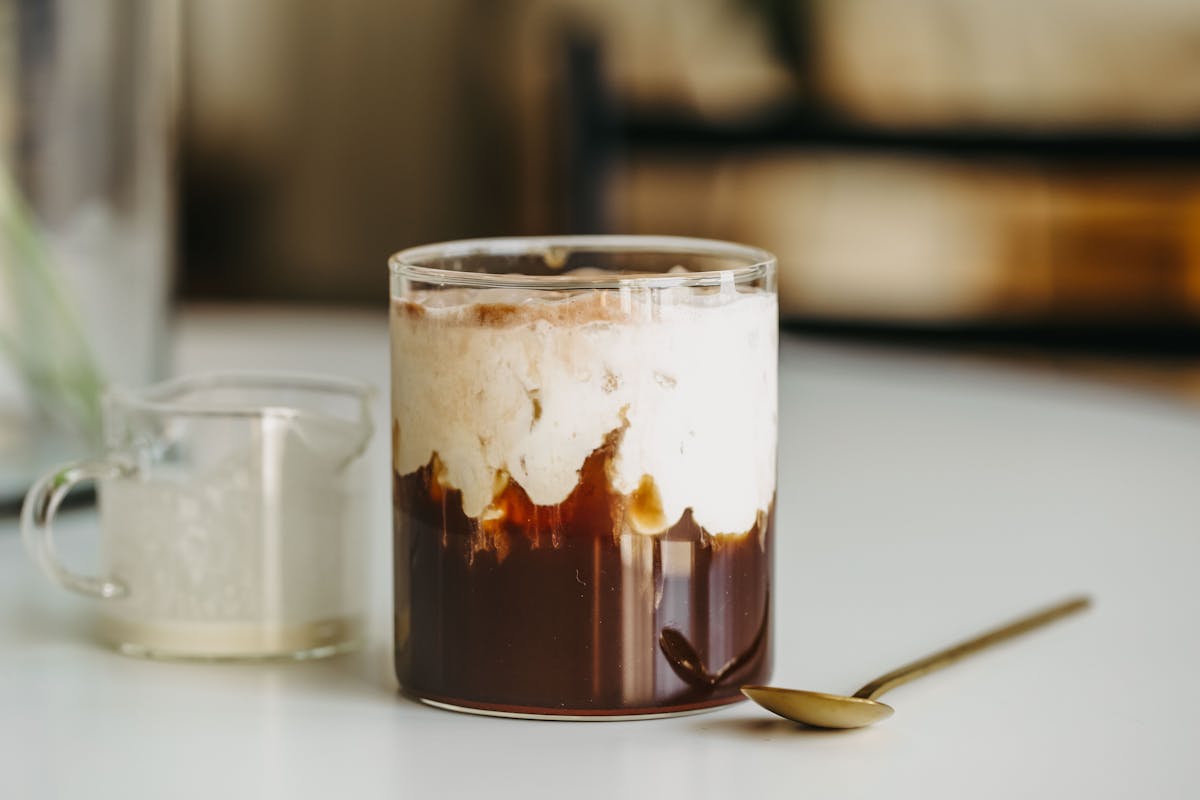
Cold, creamy and delicious - This chocolatey cold brew recipe is the perfect treat to kickstart your morning! The Recipe Chocolate Cream Cold Brew Prep Time: 1 minutes Cook Time: 5 minutes Ingre...
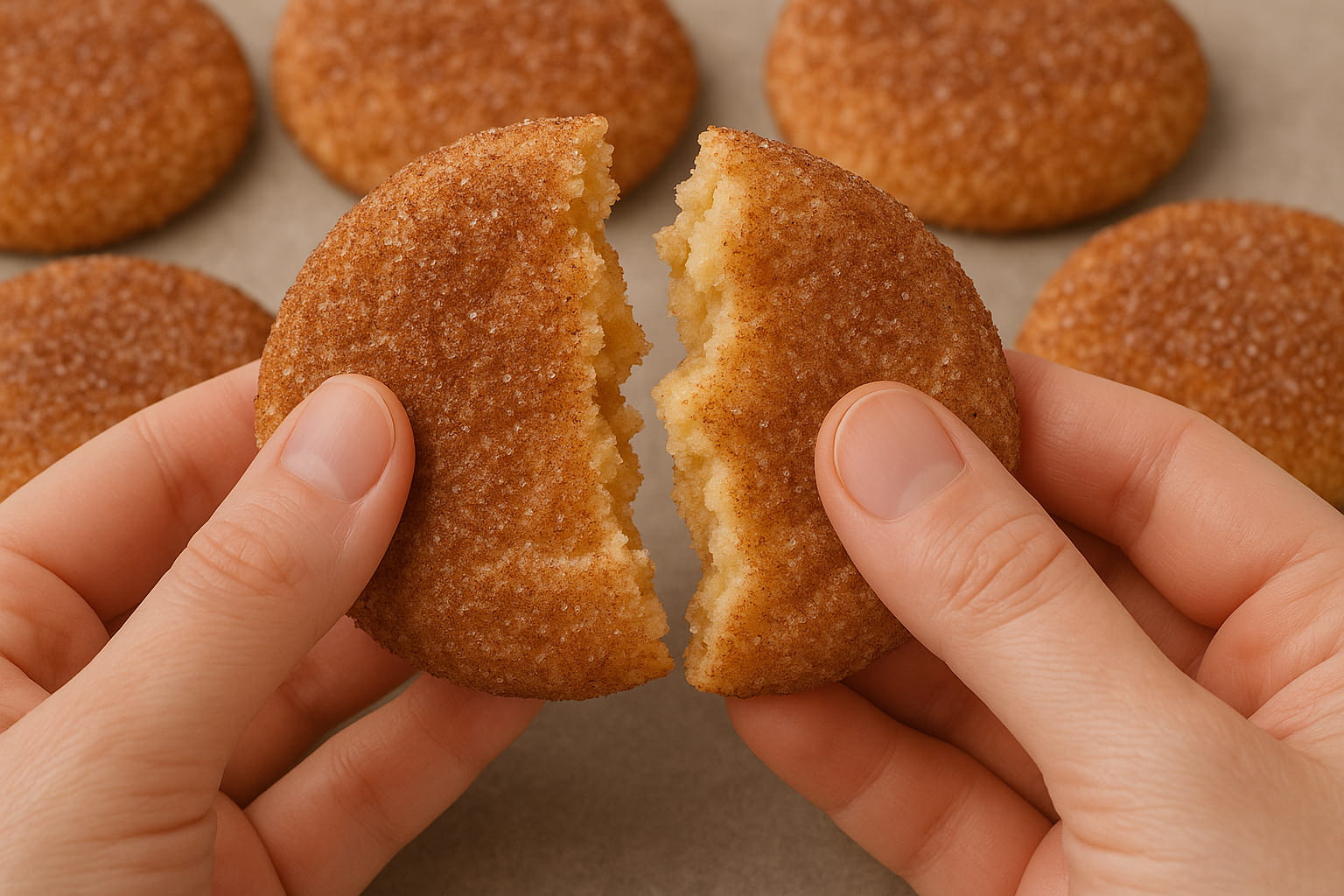
Indulge in the warm embrace of autumn with Pumpkin Spice Snickerdoodles - soft, spiced, and utterly irresistible! The Recipe Pumpkin Spice Snickerdoodles Prep Time: 10 minutes Cook Time: 1 hour ...
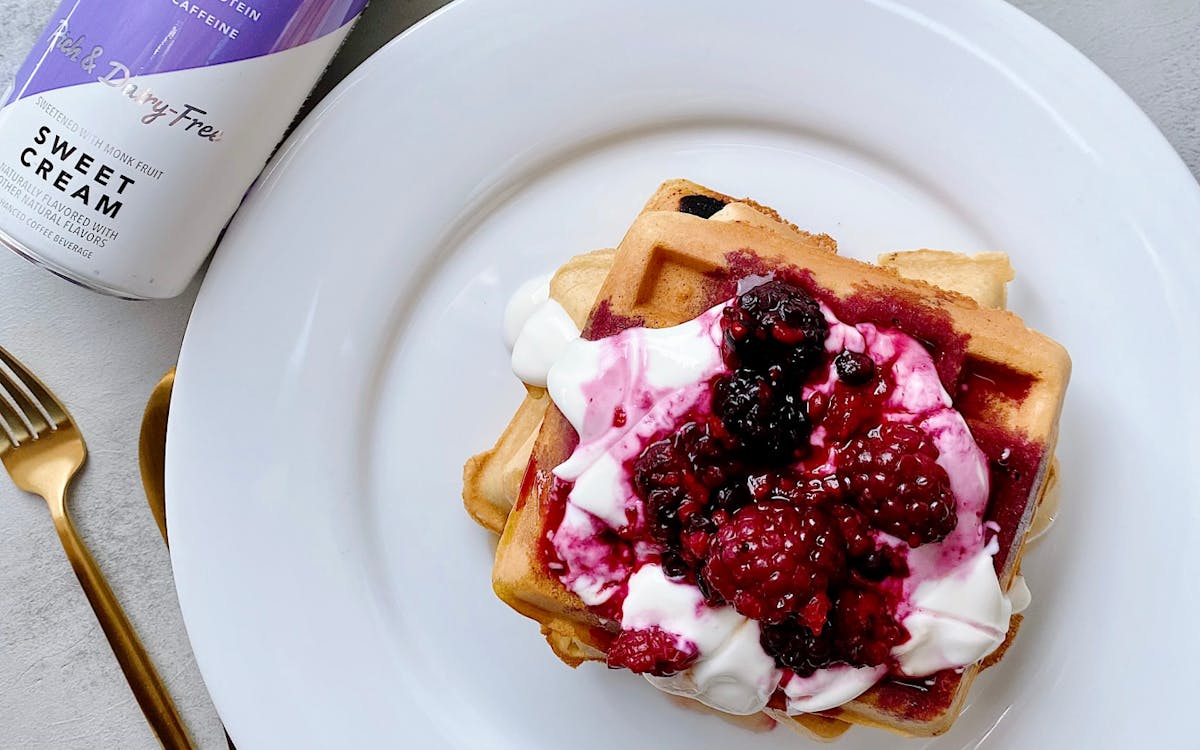
Low Carb Berries & Cream Waffles
These low carb/low sugar waffles are delicious, wonderfully crispy on the outside, and fluffy on the inside. You can also double batch and freeze for easy weekday breakfasts. Featuring our almost-...
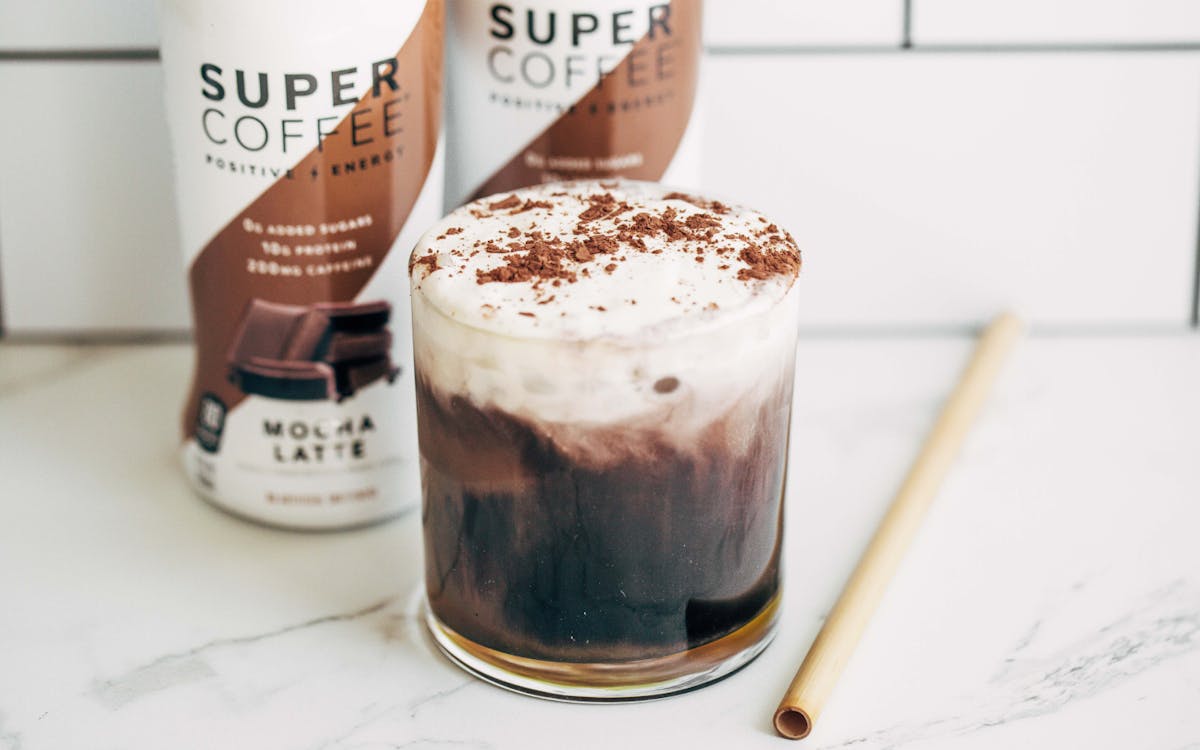
This may be the most fun latte recipe we’ve tried yet! With gooey & decadent black chocolate drizzle and a thick layer of creamy French Vanilla, just one sip of this iced latte will transport ...
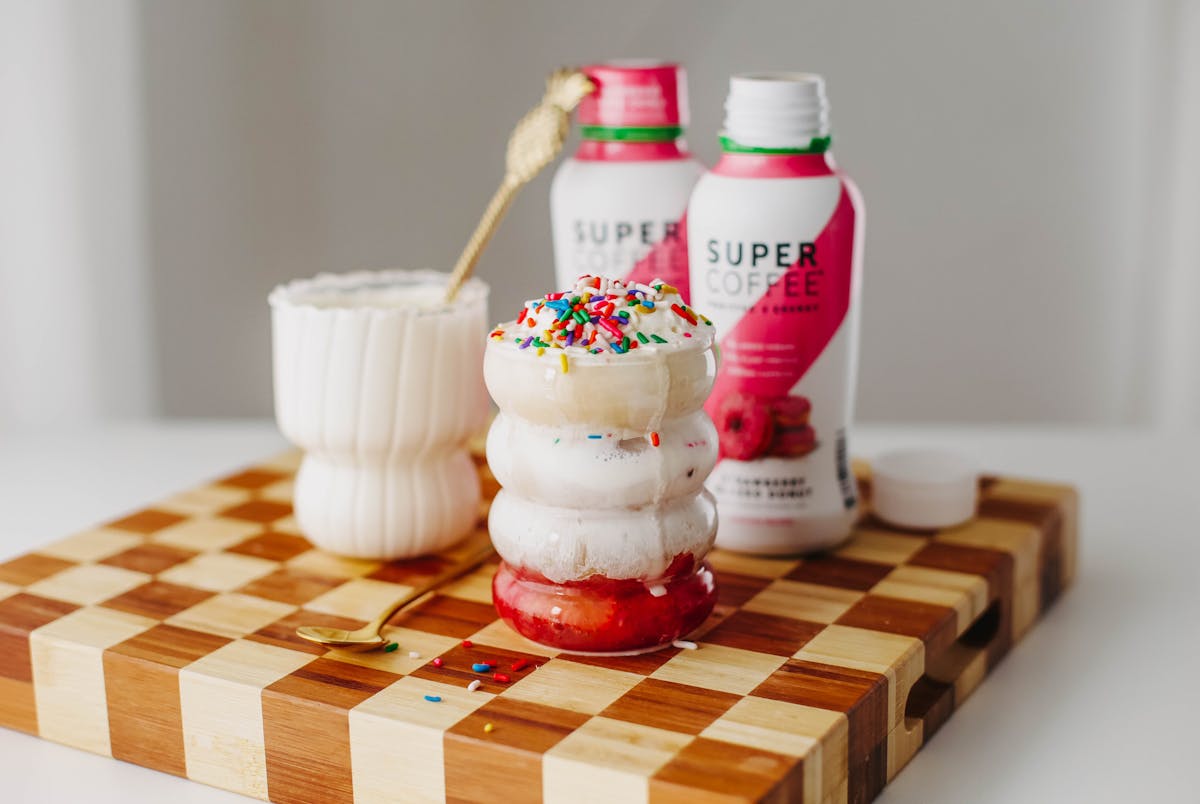
Strawberry Sprinkle Keto Coffee Recipe
Nutritional Info Calories: 274 Fat: 26.7g Carbs: 5.7g Protein: 4.5g Sugar: 2.1g Ingredients 3 strawberries, sliced. 3-4 tbsp heavy cream or half & half. Enough ice to fill a glass. 1/2 cup S...
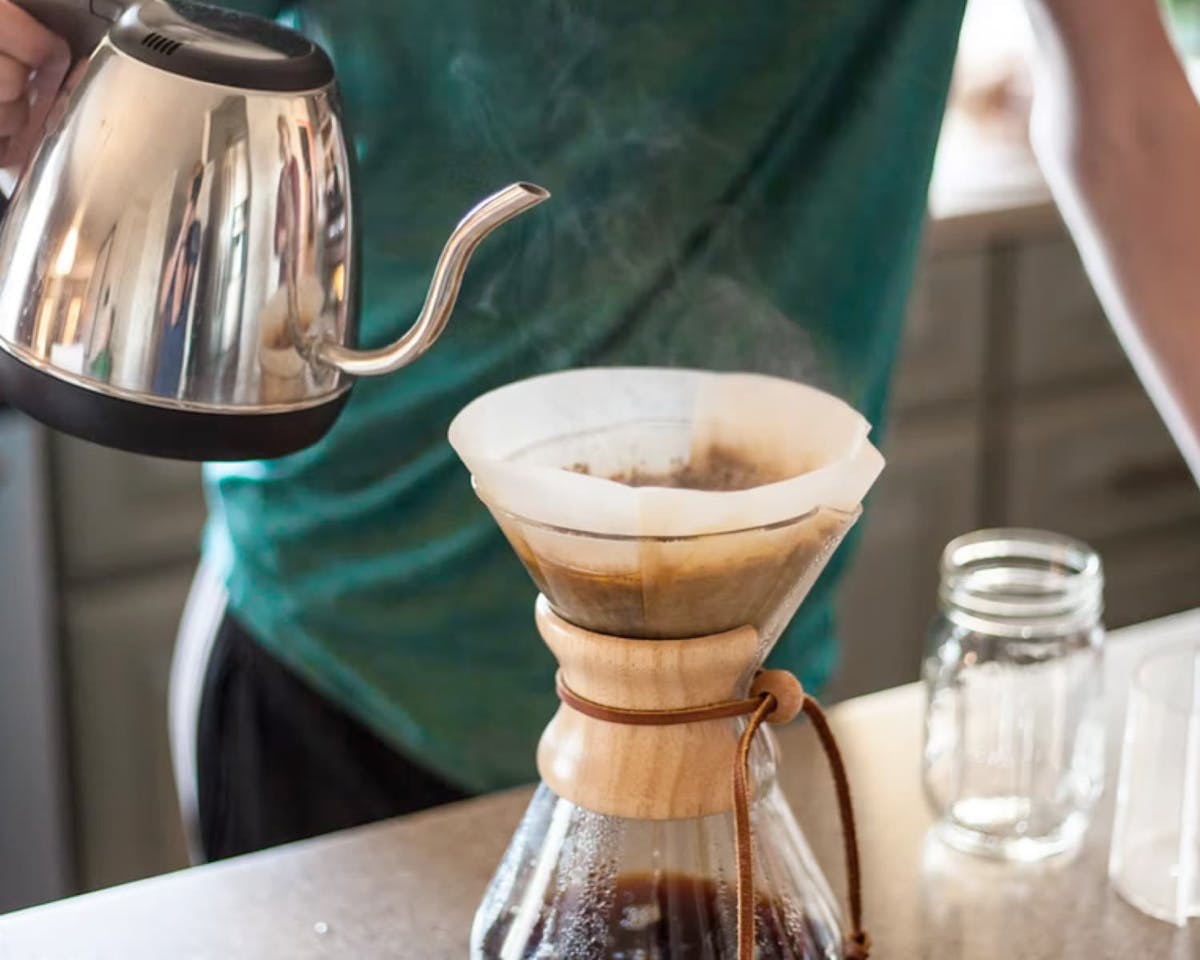
8 Healthy Coffee Recipes That Are Better Than Starbucks
There’s no question about it. Coffee is good for you. Those who don’t like black coffee, of course, commonly add milk, cream and sugar – even if that also means adding calories, fat or carbs to the...




